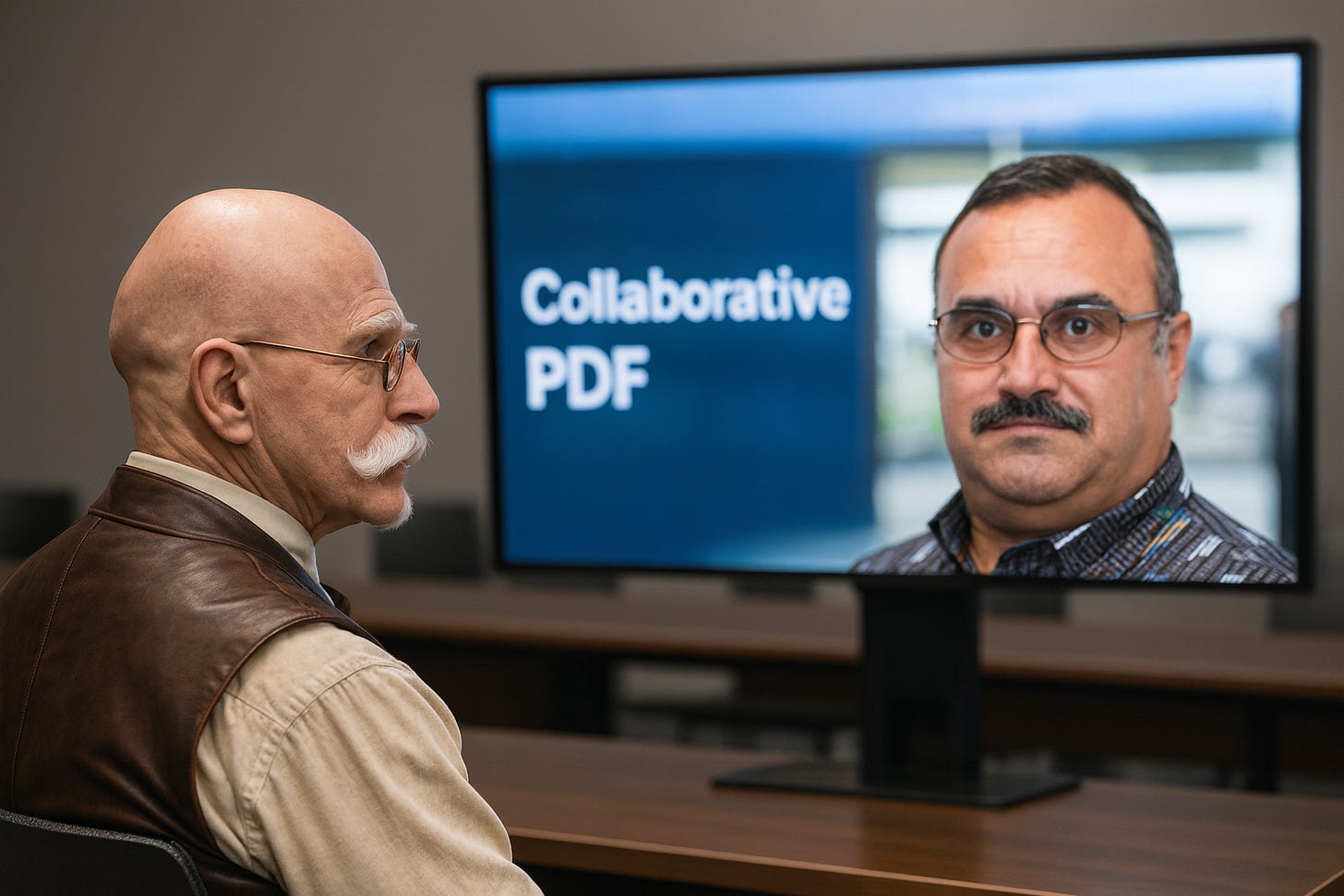At PDF Days Europe in Berlin, Leonard Rosenthal opened his session with a laugh. He had chosen the title months ago, forgotten what he intended, and then had to reinvent the talk when it came time to make the slides. What he delivered was a sharp reflection on what collaboration really means for PDF, a format built for one careful user at a time, and what happens when AI agents join the mix.
Collaboration, human and agentic
Rosenthal reminded us that PDF has always excelled at reliability, portability, and fidelity, but never at live, multi-user work. He broke collaboration into three categories: comprehension, commenting, and editing. The first is about structure and understanding, the second is where people interact most, and the third is where the architecture of PDF really shows its limits.
He also pointed to a second definition of collaboration, “traitorous cooperation with the enemy,” and admitted that sometimes that is exactly how it feels when we try to collaborate.
Comprehension: semantics beyond structure
Tagged PDFs give us headings, lists, tables, and alt text. There are even underused page-level semantics (DParts) to relate groups of pages. But Rosenthal argued this is not enough. AI systems need to know relationships: that a drop shadow is not a shape, or that a callout belongs with a figure.
He highlighted the PDF Association’s derivation algorithm, which turns tagged PDFs into standardized HTML or Markdown if needed. Originally intended for rendering, it is now proving valuable for feeding structured content to AI. But he stressed that richer semantics, “content semantics,” a term he introduced back in 2013, are still missing. Without them, comprehension by humans or machines remains partial.
Commenting: annotations with gaps
Annotations have been in PDF for decades. Links, rich media, and threaded comments are all handled through annotations. Rosenthal noted that the model is powerful, but in practice underused. Most systems flatten threads or ignore states.
What is missing, he said, are simple collaboration primitives: document-level comments such as “I approve this document,” page-level reactions such as “Delete this page,” and the lightweight responses users are accustomed to on social platforms like thumbs up or emojis. The annotation model does not yet accommodate those.
Forms: a collaborative legacy
Forms were one of the earliest collaborative workflows in PDF, filled out, routed, and signed. Rosenthal pointed to the dormant forms.next project, a JSON-based grammar that could standardize how forms data is structured, extracted, and understood by both humans and agents. He suggested reviving it as a way forward.
Editing: incremental updates and their limits
Incremental updates, one of Rosenthal’s favorite features, allow non-destructive histories and quick saves. But they were designed for single users. In a collaborative world, a single character change can create a large delta, privacy rules can force full saves after deletions, and the update chain is flat when what is really needed are branches and merges.
He also noted how confusing it is when content and annotation layers do not line up. A strikeout in annotations disappears in edit mode, for example. If that confuses humans, he said, imagine what it looks like to an AI agent.
Provenance and content credentials
Rosenthal devoted a section to attribution and provenance. He described work with the Coalition for Content Provenance and Authenticity (C2PA), now being standardized through ISO, which records every action taken on a file, whether by a human or an AI, and cryptographically seals it into a manifest.
This, he said, supports requirements in the EU AI Act and similar laws around the world for labeling AI use. It also lets creators assert rights like “do not train” and even encode licensing terms into PDFs in a machine-readable way. He highlighted current work on PDF extensions to content credentials (ISO 32008), as well as related efforts in JPEG Trust.
Agents in the workflow
Rosenthal closed with a charge. The world is moving toward an agentic model where much of the work, from comprehension and commenting to editing and even creation, will be done by software agents. AI companies, he argued, do not understand PDF. They bolt on open-source libraries and call it done. It is up to the PDF community to ensure agents can actually work with the format properly.
His message was blunt: we understand PDF, they do not. If collaboration is going to succeed in an agentic world, we have to make it work.


